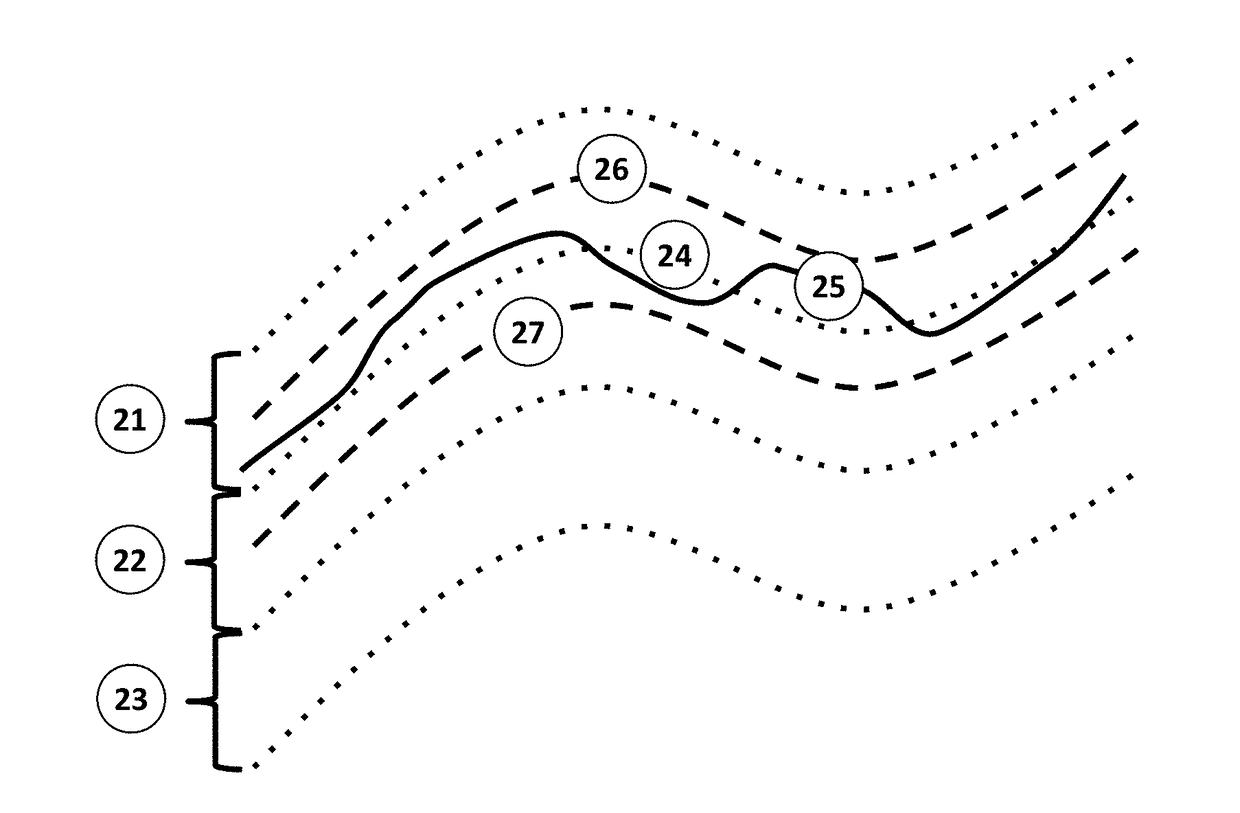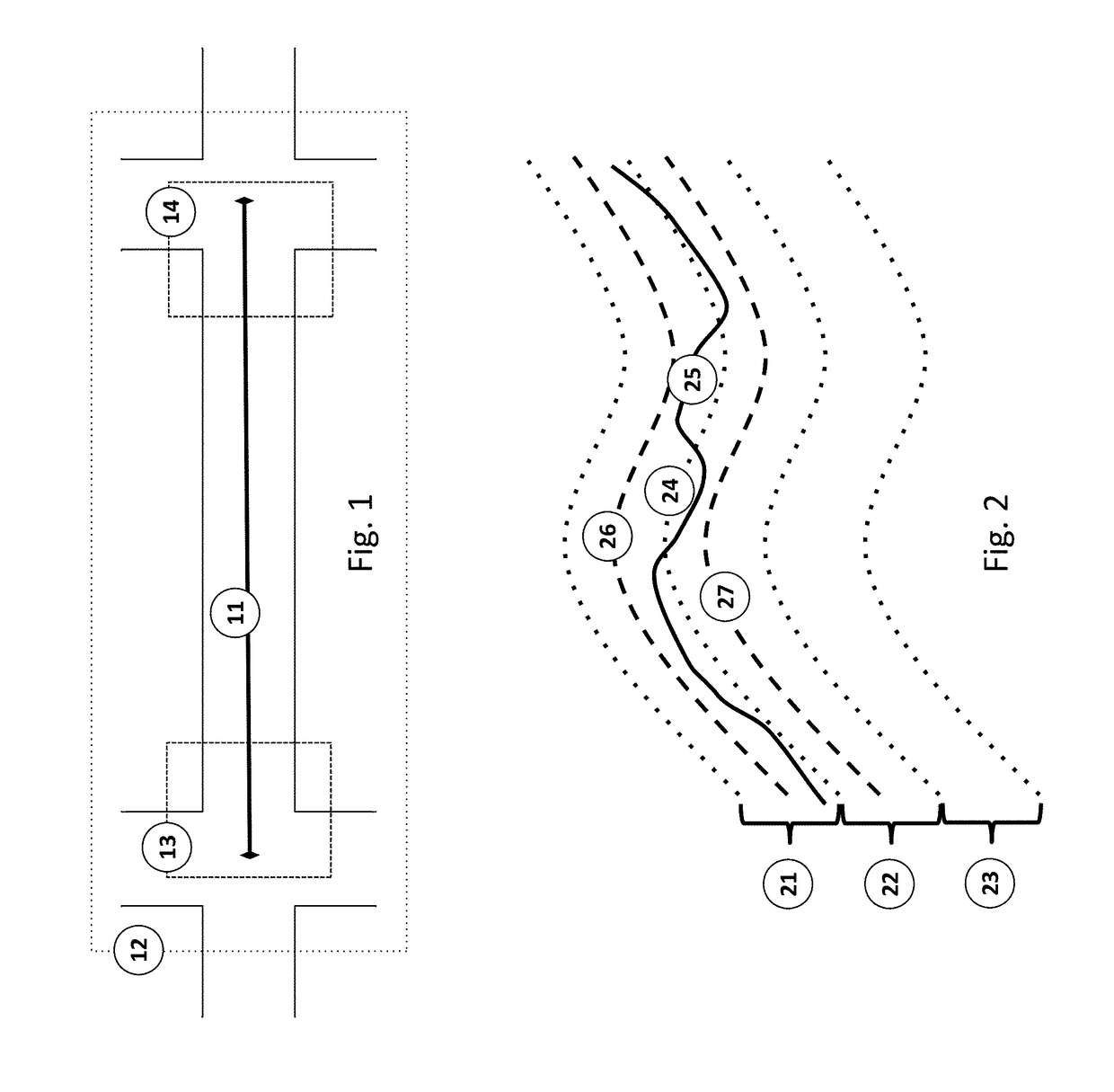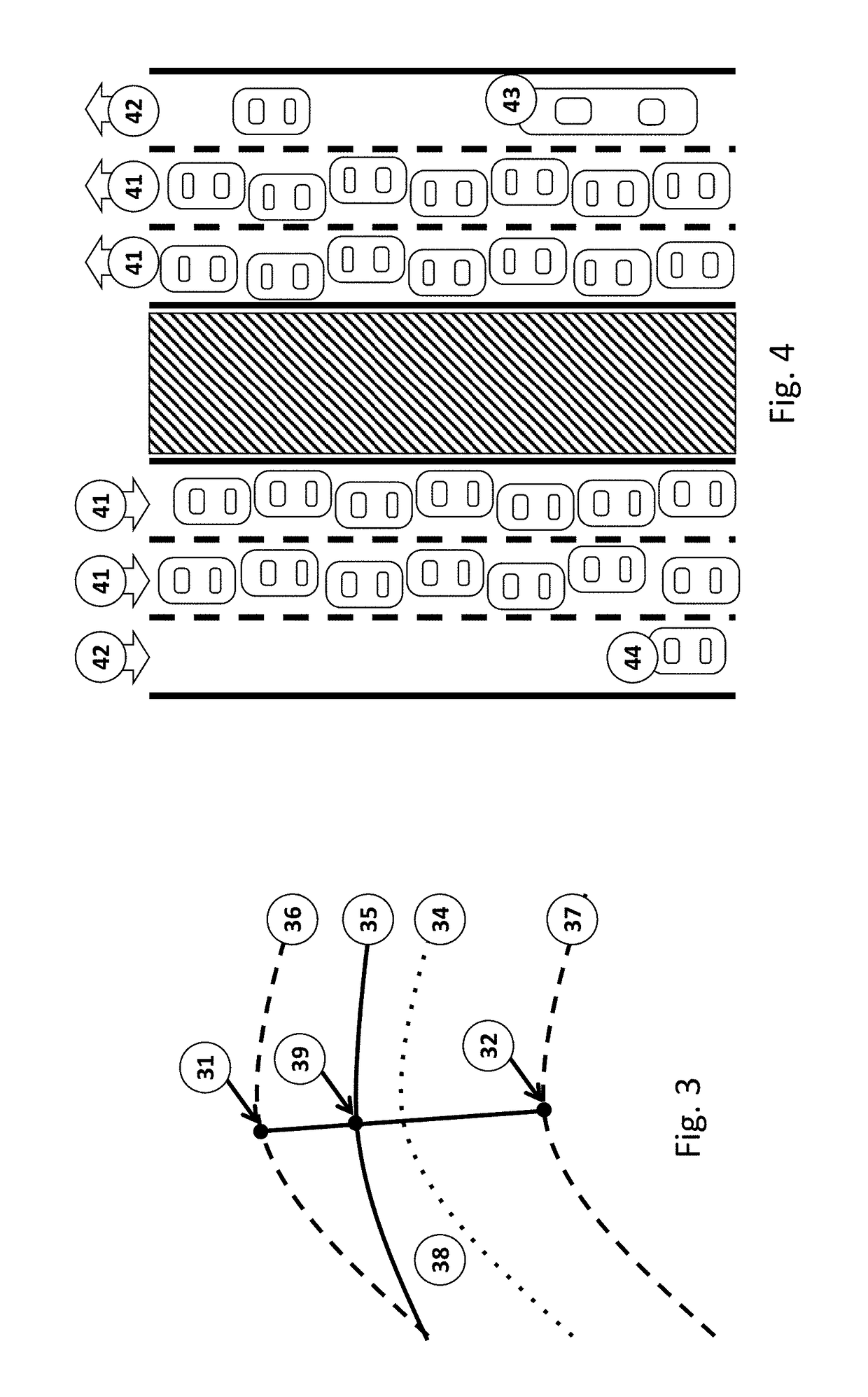Method of autonomous lane identification for a multilane vehicle roadway
a multi-lane vehicle and autonomous technology, applied in the field of roadway lane management, can solve the problems of reducing the capacity of tolling vehicles, the potential cost of a system to detect these users and charge for use, and the critical concern of expense, so as to improve the charging performance and improve the autonomous lane identification
- Summary
- Abstract
- Description
- Claims
- Application Information
AI Technical Summary
Benefits of technology
Problems solved by technology
Method used
Image
Examples
Embodiment Construction
[0064]When using telemetric location methods such as GNSS, cell-tower or WiFi or equivalent, particularly within urban environments or other forms of harsh signal terrain, it is well known that errors of a few or several meters are common. These errors are often mitigated with application-specific equipment or application specific processing for specific contexts.
[0065]In the case of this invention—lane identification within a multilane vehicle roadway—vehicles may be segregated by type (bus, truck, hazardous goods, car), occupancy (single occupant, multi-occupant), or by usage fee (toll or no toll) or other combination or distinction. FIG. 4 shows an instance of this for free lanes 41 versus high occupancy / toll lanes 42. This invention is useful for high occupancy / toll (“HOT”) contexts, but it is not restricted to tolling applications. On the contrary, it can be applied in other traffic, travel and infrastructure management applications that rely on detecting lane of travel.
[0066]T...
PUM
 Login to View More
Login to View More Abstract
Description
Claims
Application Information
 Login to View More
Login to View More - R&D
- Intellectual Property
- Life Sciences
- Materials
- Tech Scout
- Unparalleled Data Quality
- Higher Quality Content
- 60% Fewer Hallucinations
Browse by: Latest US Patents, China's latest patents, Technical Efficacy Thesaurus, Application Domain, Technology Topic, Popular Technical Reports.
© 2025 PatSnap. All rights reserved.Legal|Privacy policy|Modern Slavery Act Transparency Statement|Sitemap|About US| Contact US: help@patsnap.com



